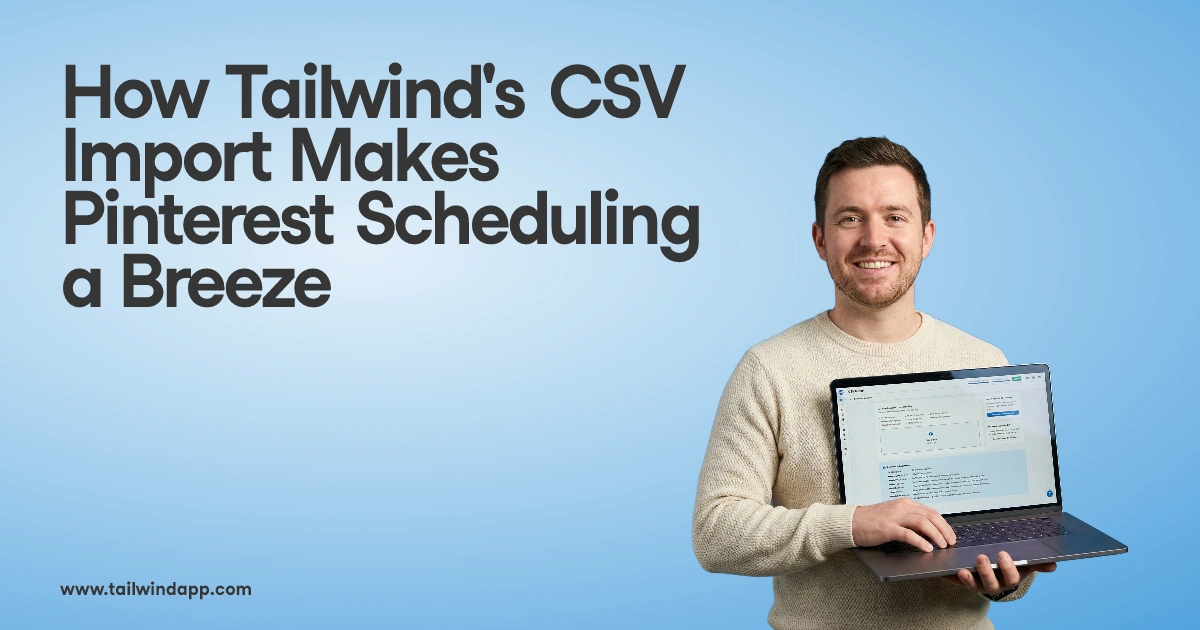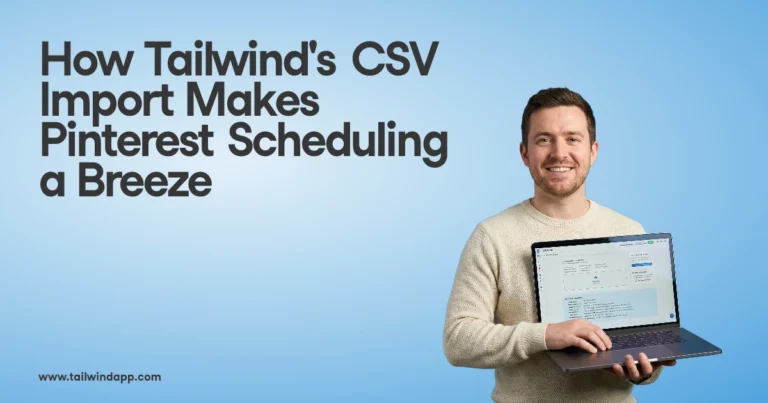
We’ve all heard about the massive potential of social media platforms like Facebook, Instagram, TikTok, and YouTube for ecommerce.
Pinterest, with 463 million active monthly users, doesn’t have as big of a user base compared to Facebook or TikTok. But when used right, Pinterest can be a game-changer for ecommerce businesses.
Pinterest for Ecommerce: Why Pinterest?
More and more ecommerce brands are leveraging Pinterest as a vital part of their overall marketing strategy.
After all, Pinterest is more than just a digital mood board or scrapbook of fashion, home, and decor inspo.
Pinterest is a dynamic, aesthetically-pleasing visual content library that can serve as a search engine, online marketplace, product catalog, and marketing vertical in one robust social platform.
In essence, Pinterest combines the utility of Google Search and the attractive visuals of Instagram, making it an ideal marketing tool for ecommerce brands.
Here are five main reasons why ecommerce brands of all sizes should use Pinterest:
- Visual search engine capability. People often use Pinterest to search for products and inspiration. The emphasis on visual content helps shoppers decide on purchases. Nine out of 10 individuals use Pinterest for products to buy — eight out of which end up buying.
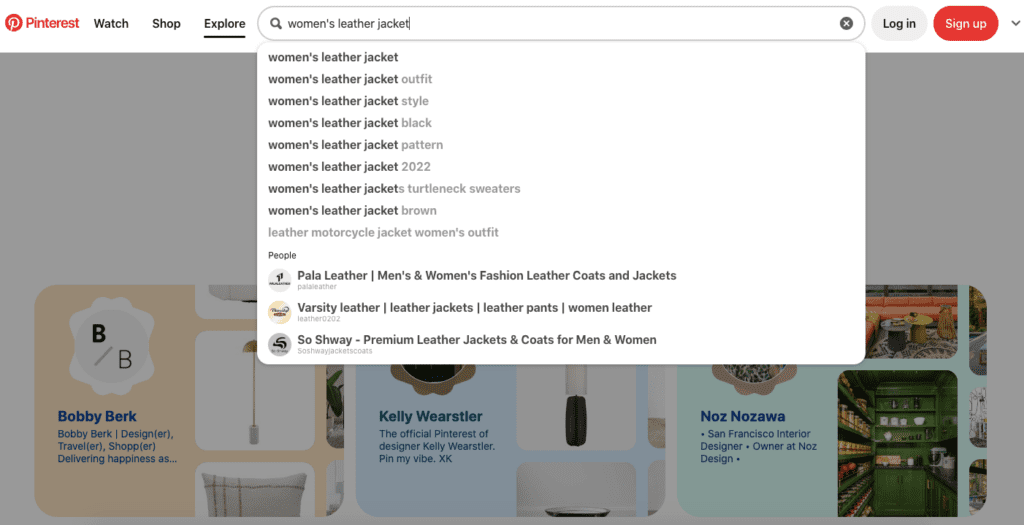
- Access to highly-engaged shoppers searching for new trends. Pinterest users are among the most engaged users on social media, saving almost 250 billion pins (and counting), with Pinterest shoppers spending twice as much time on the platform than others. That’s oodles and oodles of highly-engaged shoppers all waiting to catch the next big trend.
- Native shopping features. Pinterest is a perfect match for ecommerce, with its product pins, wishlists, and shoppable catalogs. They even have a partnership with Amazon!
- Overall ecommerce support. Pinterest supports a host of ecommerce business objectives on the platform such as brand-building, running Pinterest ads, debuting new products, or for brands to have another relevant traffic source.
- Target audience primed for conversions. 45% of Pinterest users have household incomes of over US$100,000/year, and 85% of Pinterest users have bought items after seeing a Pinterest pin. Using Pinterest is a no-brainer in helping ecommerce businesses generate more sales.
It’s all a matter of making sure your ecommerce business is in the right place and at the right time to effectively reach this potentially lucrative audience.
Pinterest Marketing Strategy 101: Getting Started
So you’re convinced about how Pinterest can help drive ecommerce businesses, and you’ve decided you want to get started. What’s the next step? It’s time to consolidate your Pinterest marketing strategy.
Follow these steps to get started:
1) Identify campaign goals
What do you want to achieve with Pinterest?
For instance, you might want more brand awareness and would focus on educating your audience and cultivating trust. Or you might want to generate leads and conversions by running Pinterest ads and promoted pins. Or you might want to boost engagement levels by creating more targeted, personalized content.
Whichever it is, it’s important to set out clear, attainable, and measurable goals.
2) Study your target audience
Interests, location, language, and interests play an integral role in identifying your ideal customers. Do they use Pinterest regularly? If not, which new audiences do you wish to target on Pinterest?
A good starting point? Do competitor research with similar, “lookalike” audiences in your industry and see how they use their Pinterest business accounts and what content they serve to their audiences. Check out which of their pins and posts get the most engagement and incorporate your findings into your strategy.
3) Craft and curate the relevant content/visuals
The best type of content that works on Pinterest for ecommerce brands is a blend of informative and transactional content to attract potential customers. This includes shoppable pins that funnel ready-to-buy shoppers directly to your online store, attractive high-quality images and videos that provide visual (and shopping) inspiration, and educational content that primes customers to make a purchase.
An alternating stream of content such as blog posts, infographics, step-by-step guides, product-related content, and videos will ensure your audience’s interest is piqued to the highest levels.
4) Track campaign performance with Pinterest Analytics
The only way to optimize your campaign performance is by understanding which key performance indicators matter to your Pinterest marketing strategy.
Pinterest Analytics is a tool that provides sophisticated audience insights with regard to audience demographics, which content they engage with, and which pins and posts perform the best. It also helps you determine the total return on investment on your ad spend on Pinterest.
Regular monitoring of Pinterest metrics such as impressions, Pin clicks, outbound clicks, save rate, and engagement are all key performance indicators of using Pinterest for ecommerce and inform you as to how to fine-tune your Pinterest strategy to optimal shape.
Setting Up Your Pinterest for Business Account
Now that your Pinterest strategy is shaping up, it’s time to proceed with the creation and setup of your Pinterest Business account.
You have three options. You can: 1) Convert your personal account to a Pinterest business account, 2) Create a linked business account to your existing personal account, or 3) Create an entirely new Pinterest business account.
Here’s how to do all three:
Creating a New Pinterest Business Account
- Click the arrow on the top-right corner of your personal account home page. Click “Add Account” and select “Create a new business account.”
- Haven’t registered to Pinterest yet? Click “Sign Up” on the top-right corner of the page, and select “Create a business account.”

Converting a Personal Account to a Business Account
- Click the arrow on the top-right corner of your personal Pinterest account. Click “Add Account” and select “Convert to business account.”
- Fill out the respective fields and choose where to begin, or go straight to your converted Pinterest business account by clicking the “X.” You can always switch back to a personal account anytime.
Linking an Existing Personal Account to a Business Account
A linked Pinterest business account is one that’s connected to your existing personal account. You can access both accounts using the same login/password combination and switch between sessions conveniently.
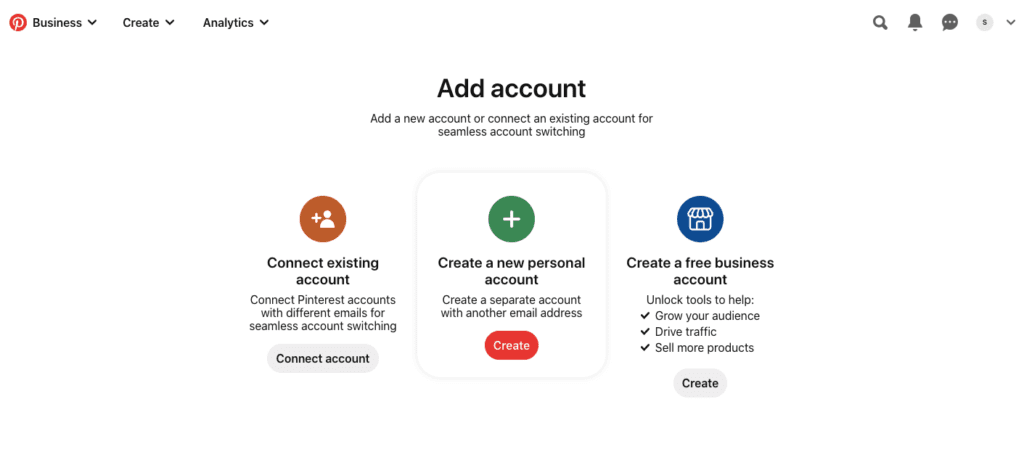
- Click the arrow on the top-right corner of your personal Pinterest account. Click “Add Account.”
- Select “Connect existing account.”
- Populate the required fields, describe your business, and set out your goals.

How to Use Pinterest for Ecommerce: Best Practices
Got your brand new business account up and running? It’s time to draw more engagement, traffic, and views on your pins. Here is a list of the best practices for your ecommerce marketing strategy on Pinterest:
1) Brand and optimize your Pinterest business account
As an ecommerce brand, you want to get your name out there so shoppers can discover your brand and learn what products it has to offer. Therefore, you need to make your business profile pop and match your brand. Don’t forget to include keywords in your profile.
That said, it’s important to upload your brand logo, apply an attention-grabbing cover photo, shorten your product URLs and customize them with your brand and product info, and make appropriate pin descriptions representative of your brand.
PRO TIP
Import these same settings into Tailwind Create to create branded Pins more quickly.
This will help Pinterest shoppers quickly find your products and learn more about your brand through the right keywords.
2) Craft tailored content that resonates with your brand and target audience
When you start creating boards and pins, you always need to keep your ideal customer in mind. Pinterest users harness the platform to get inspired, hunt for trends, and discover new products, so you want to create content focused on your goals.
Create content that your target audience actively looks for — with infographics, how-to’s, and step-by-step guides they will find valuable. Focus on creating informative, helpful content surrounding your product and your brand to ultimately sell more products.
PRO TIP: Pinterest is a place for planning! Create content for holidays ahead of time, while your audience is in planning mode.
3) Leverage Pinterest Trends for content creation inspiration
In line with tip #2, ecommerce business owners can leverage Pinterest Trends, a tool that shows the hottest trending pins Pinterest users are searching for by creating content that aligns with what’s viral and relevant.
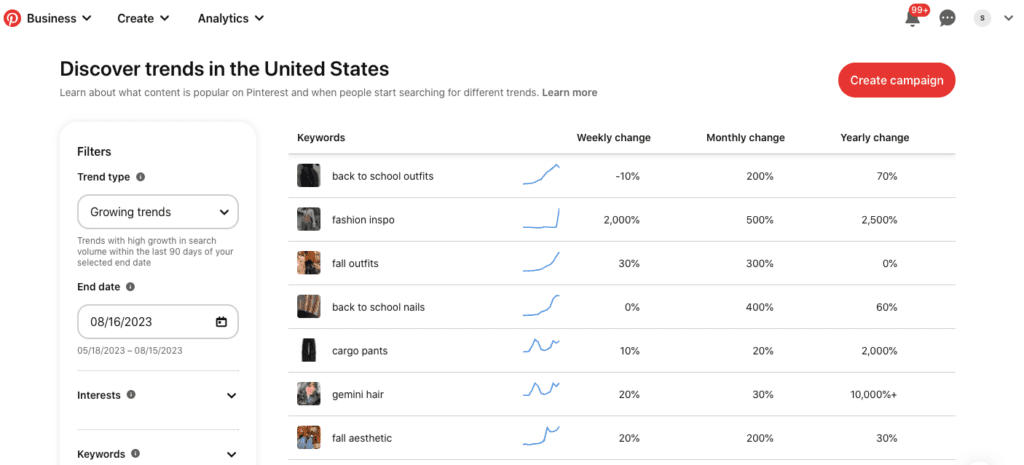
For instance, since “back to school outfits” is one of the hottest trending Pinterest searches, you can search through your brand’s content assets and upload something informative about back-to-school fashion trends. You can also use Pinterest Trends to help identify opportunities to sell new products driven by the prevailing trend.
4) Share inspiring, informative, and educational pins
Pinterest is, above all, a visually-driven social platform for sharing ideas and photos. Therefore, your pins need to be visually engaging and aesthetically pleasing for them to draw attention and engagement, and pique your target audience’s interest. The best pins are often vertically oriented and demonstrate how to use a product or perform an action.
Lately, many users prefer video content. While a video pin may take more time to produce, it will also generate more engagement and will give you more “space” to get your message across.
It might not be the best fit for all brands, so make sure to test both and see what works best for you.
5) Leverage Pinterest advertising
Pinterest features a robust advertising platform, delivering a 2x higher ROAS (return on ad spend) for retailers than other social media platforms. Pinterest also offers a variety of ad formats and ad targeting options to help you find your ideal customers on the platform.
Pinterest’s promoted pins serve as the equivalent of Facebook or TikTok ads. Promoted pins allow you to set a target audience, select an image, and define budgets for your ad campaign. Pinterest will then serve your promoted pins to Pinterest users that fit your target audience’s profile. Promoted pins are a great way to introduce your products to new audiences and simultaneously raise brand awareness.
6) Use rich pins
Rich pins, on the other hand, are special pins that include additional information beyond the typical pin’s click-through URL, image, and description. Whenever linked to your website, rich pins update automatically as your website changes.
Rich pins include: 1) article pins, which allow users to see the headline, author, and story description of an article; 2) product pins, which allow Pinterest shoppers to click through the product page and check out immediately; and 3) recipe pins, which contain more information about serving sizes, measurements, and ingredients.
7) Conduct Pinterest SEO keyword research
As we’ve mentioned earlier, Pinterest is a visual search engine, making SEO an important facet of your success. One of the best practices is to use the exact same keywords your target audience uses to refer to your products so your pins show up frequently under related search keywords.
For instance, you can use Pinterest Trends to search for trending keywords based on region. You can also use Pinterest’s search bar, and check which keywords your competitors are already using to make it easier for shoppers to find their products.
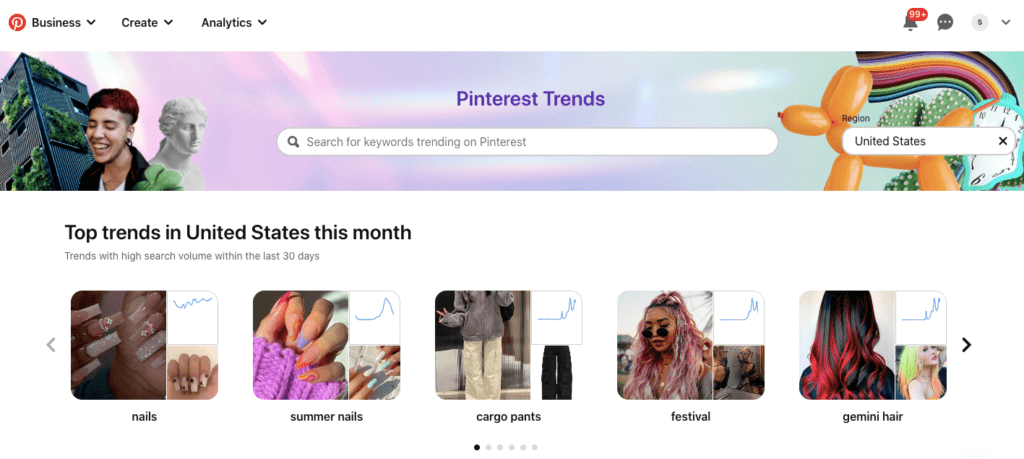
8) Create a product catalogue on Pinterest
Want to turn your products into shoppable pins quickly? You can upload your product catalogue as a file to Pinterest to create one accessible from your Pinterest profile. This makes it easy for ecommerce merchants to integrate with Pinterest.
9) Create boards, organize, and optimize them
Pinterest boards help you categorize your product offerings and find dedicated niche audiences besides organizing your catalogue. They can also help boost your following, and consequently, your conversions.
For instance, you can fine-tune your keywords in your boards and descriptions. You can also drill down on a specific niche or product category to find committed audiences. Meanwhile, shoppers sharing the same attributes as your target audience can gain exposure to your boards, allowing them to explore your brand in an organized, relevant manner.
You can begin by creating separate Pinterest boards categorized by product line, or create product groups focused on specific audiences.
Get The Most Out of Pinterest!
Pinterest is in a world of its own as far as social media is concerned because of its unique visual search capability paired with social features. Users can save pins based on their interests, while making them easier to share their inspiration with others.
Ecommerce retailers ought to leverage the tremendous selling potential of Pinterest –– and there’s no better time to start “pinning” than now.

